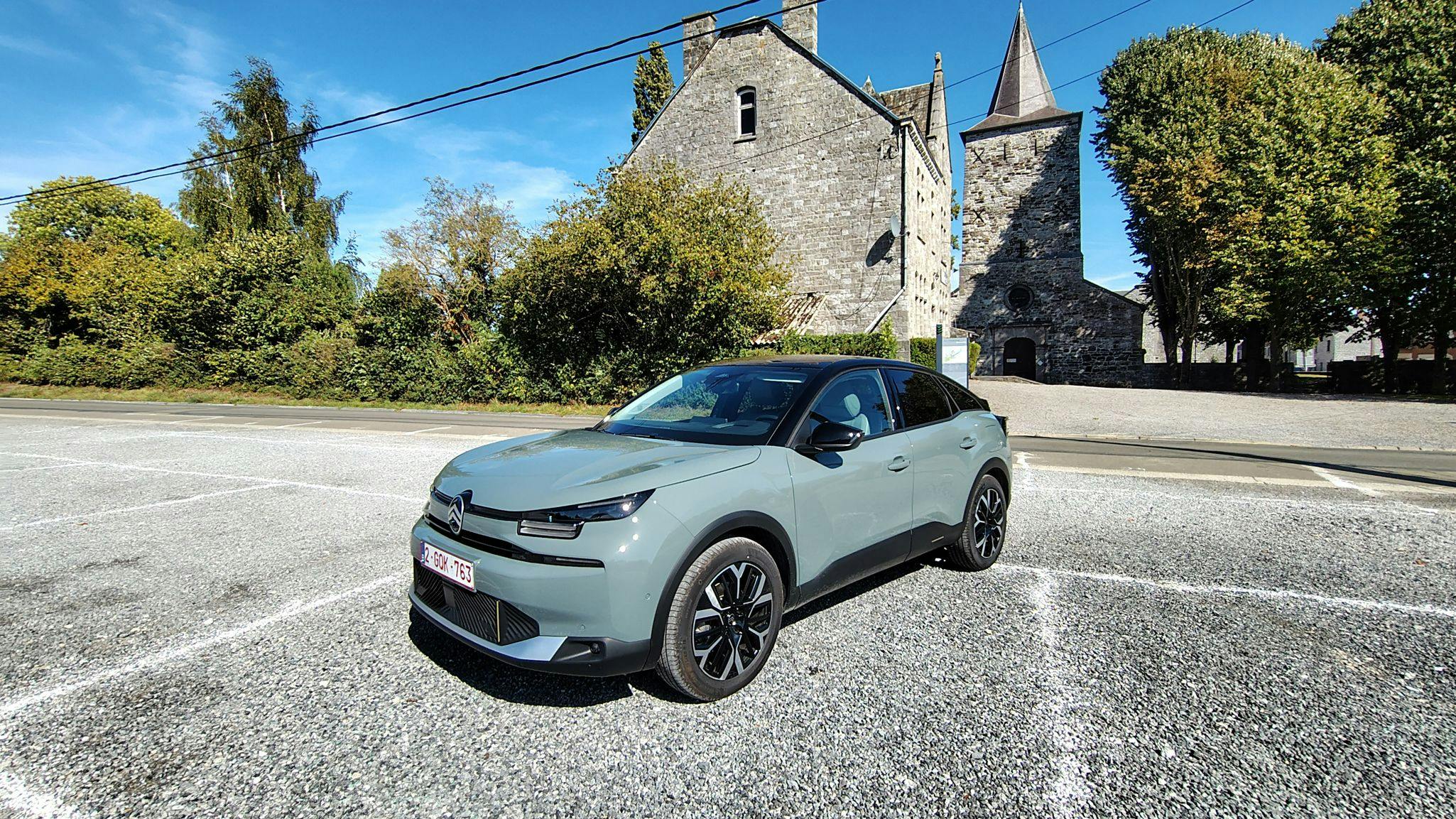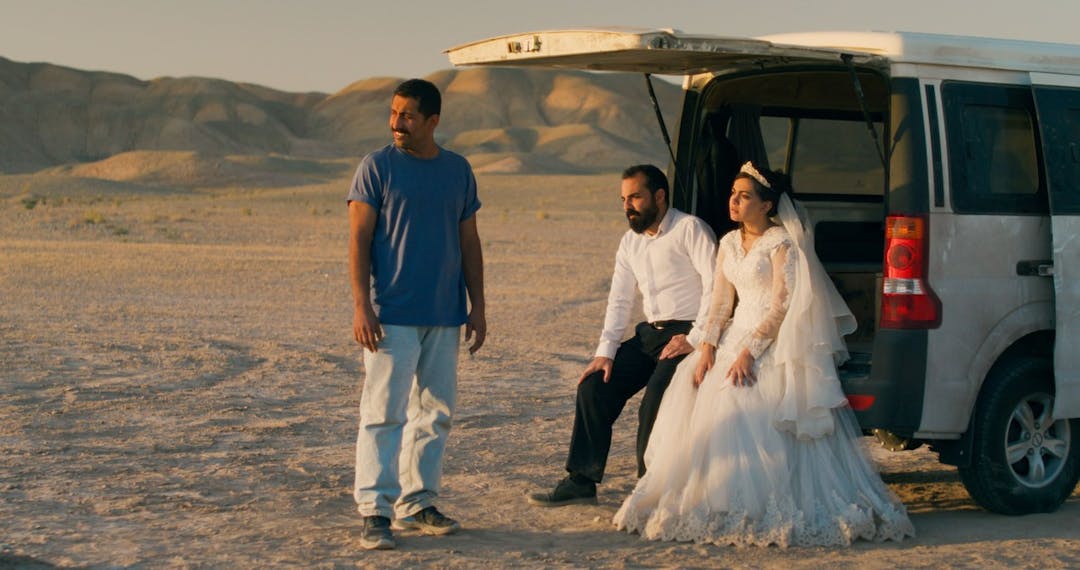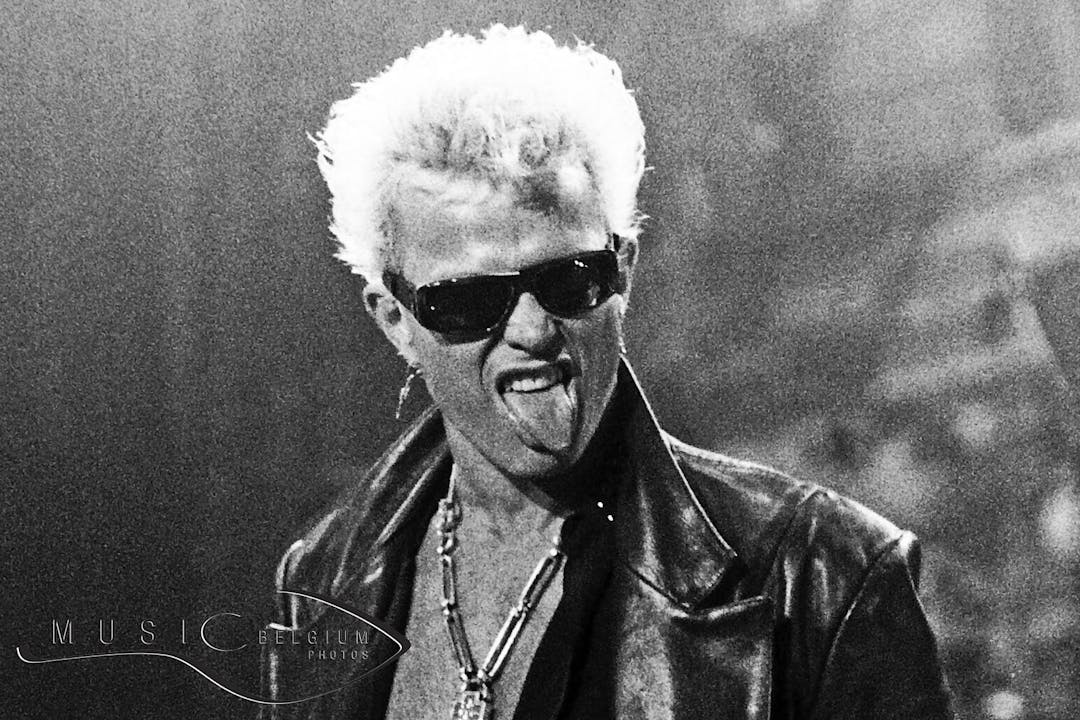
TAGTIK NEWS - TO THE POINT
Citroën ë-C4 test: saved by its consumption

Citroën has reworked the styling of its C4 for 2025. The electric ë-C4 variant is following suit. The recent 115 kW (156 hp) engine with the Extended Range battery also benefits from the new body and new styling cues. Can the facelift make the French car an outsider in the electric car market?

The 115 kW (156 hp) power output demonstrates that this car isn't here to steal the thunder from the big electric muscle cars. Especially given its battery capacity: 54 kWh, of which 50.8 kWh are usable. These specifications are enough to leave one doubtful. With that, we won't be able to go very far. However, Citroën promises a WLTP range of 415 km. That means 12.2 kWh/100 km of consumption. However, despite numerous trips outside of cities, my week-long journeys showed that Stellantis isn't as boastful as one might have thought. On this point, at least.

Excursion permitted
Obviously, the 12.2 kWh/100km figure is mostly reserved for those who drive in the city and nearby surrounding areas with ease. Hardly anyone, in reality. For my part, respecting the Walloon speed limits (50, sometimes 30 – 90, sometimes 70 – 120), on varied routes in Belgium between Western Hainaut, Walloon Brabant, Namur, and a foray onto the Brussels ring road at 100 km/h, consumption averaged 14.8 kWh/100 km over more than 450 km, with the air conditioning on in automatic gentle mode. And for that, I say bravo.

On highway sections, at 120 km/h and mild late summer temperatures, I didn't exceed 17 kWh/100 km. Bravo again. This allows for highway stints of almost 2 hours and a little over 220 km, in areas where charging stations are easy to find. Looking at the car's history, with perhaps drivers a little less fond of highway strips, the average was 14.3 kWh/100 km. So 355 km of range from 100% to 0% battery! In short, it's possible to embark on short expeditions for leisure, work, or family gatherings. But not too far, because the ë-C4 will end up slowing you down at the charging station.

Lazy
Indeed, Citroën has limited the fast charging power to 100 kW. Moreover, at the end of the charge, it drops drastically. To the point that after a good half hour to reach 80%, with peaks of over 75 kW, you'll have to wait just as long, or even longer, for the remaining 20%. Generally, the car allowed 1 hour 20 minutes to reach 100%.

At least there are games on the screen to pass the time. Connect 4, for example, at 7am in a parking lot on the cusp of autumn. And in winter, it's likely to be even more tedious, especially without heated seats. And taking into account, as a bonus, highway consumption, which is likely to exceed 20 kWh/100 km this time.

The NMC (nickel, manganese, cobalt) lithium-ion battery with a rather reasonable nominal capacity of 54 kWh helps limit the ë-C4 Extended Range's curb weight to 1,646 kg. This mass absorbs the road thanks to shock absorbers with progressive hydraulic stops. This proves that Citroën remains attentive to the comfort of its suspensions. The weight distribution with the battery has lowered the center of gravity. This allows the car to avoid rolling.

The ë-C4 absorbs most imperfections well. However, all those pounds are felt a little with a touch of firmness and a few jolts on certain irregularities. On the other hand, the car remains placid without penalizing the comfort on board. As for acceleration, the 156 hp and 260 Nm are enough to achieve 0 to 100 km/h in 9.1 s. The top speed is 150 km/h. We can't call it a dynamic sedan.

Foam
The ë-C4's patterned Advanced Comfort seats have seen their high-density foam increase in thickness with the facelift. Rear-seat passengers are also comfortably seated, so four adults can enjoy the ride without too much strain.

In the trunk, with a raised floor in this Max trim, luggage space is limited to 380 liters. And even a little less, since you also need space for cables. We hid them under the board placed at the height of the trunk sill. By folding down the bench seat, it's possible to transport 1,250 liters of various items. Despite the ë-C4's design, the tailgate opens low enough to avoid breaking your back too much.

On the other hand, we struggle on the rollers to reduce the power of the air conditioning vents. What's this madness? It's almost impossible to move them sometimes. And then there's this DIY near the glove compartment. It hides a support for an accessory: the tablet holder. Why?

In our Max trim, there's not only the 10-inch central screen, but also a 7-inch digital instrument cluster and a head-up display. Customization is limited to the bare minimum. Too bad! However, the ergonomics are rather well thought out. We regret, however, the absence of a button to deactivate the speed alert as seen on other models of the Stellantis group. Nevertheless, there are buttons below the main screen. One on the right for the main menu and another on the left for the driver assistance settings. It's with the latter that we can count the beeps (not too shrill) at each pseudo change of speed limit.

Artificial Intelligence
There are also physical controls for audio volume and dual-zone climate control. Not to mention the classic steering wheel controls. And to think that the brand has also installed ChatGPT for voice commands. That's nice, but no thanks. Okay, it's true, you can ask it to find a tourist route. A road map and internet access in a parking lot are good too. Boomer! As for navigation, you can choose between your smartphone's navigation via pairing, or the DrivePlus connected solution provided by TomTom, integrated into the multimedia system.

The car starts with a start button, then with the switch between the seats. A B button allows you to boost regeneration during braking. This is also where you'll find the driving mode selector: Eco, Normal, and Sport. Honestly, they're not very relevant, even though Eco mode will restrict the machine and Sport mode will drain the battery faster by giving the French car more momentum.

A car with a look halfway between a sedan and a compact SUV coupe. A divisive style that's out of step with many other car productions. The facelift has especially allowed for a change in the look with striped headlights erasing the grille >-^-< of the previous version. And since the refresh, this car also exists with a hybrid engine. By the way, see you soon for this test drive using petrol and electricity.

The bill
In Belgium, the 136 hp Citroën ë-C4 with a 50 kWh battery (46 kWh usable) will start at €34,740 in Belgium in September 2025. However, we recommend the 54 kWh (51 kWh usable) variant tested here. It is much more versatile and flexible than its counterpart. The base price is then €37,890. Our test model was eligible for a few options, including the black roof (€300), the essential heat pump, unfortunately a €450 option*, a Manhattan Green paint finish (€750), and a €550 Techno Light pack including the wireless smartphone charger. The total price is therefore €39,950, including the environmental contribution. There is also the option of a glass sunroof for €800, not installed on our model.
* The official website mentions the heat pump as standard, but it is an option in the configurator!

In the Grand Duchy of Luxembourg, the starting price for the You trim with the basic battery is €33,592. To drive better and longer with 54 kWh, you'll need to pay at least €36,637. The Max trim with the same options, like the model tested here, will cost €38,625. In France, the Citroën ë-C4 starts at €34,550. The ë-C4 Max 54 kWh costs a minimum of €38,300. Equipped as shown here, you'll have to pay €39,920.

In Switzerland, the Citroën ë-C4 starts at CHF 29,900. With the 115 kW engine, it costs CHF 36,800. If you add the very useful winter package with heated seats and steering wheel available on the Swiss market and choose similar options to the model we tested, you reach a whopping CHF 40,000. In the Netherlands, the price range goes from €35,215 to €41,065 (without sunroof, but with heated seats and steering wheel). For your information, in the UK, there is a 54 kWh Citroën ë-C4 starting at £30,005.

(Olivier Duquesne – Source : Citroën – Photos : © Olivier Duquesne)
LATEST NEWS

Jafar Panahi Wins New York Award and is Sentenced to Prison by Iran

Born on December 2: Peter Kingsbery, founder of Cock Robin with firebrand Ana LaCazio

Born on December 1: Julee Cruise, "Twin Peaks'" haunting voice

Born on December 1st: Alain Bashung, French rock poet who waited a long time for success

Born on November 30: Billy Idol, the (kind) rebel of Generation X

Born on November 28: Randy Newman tells stories and makes movies
Quick links